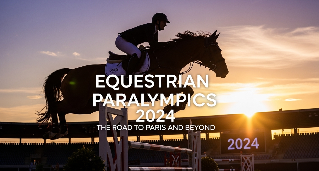“Gay for Fans”: The Hidden Dynamics of a Popular Phenomenon

In recent years, conversations around sexuality have become more open, nuanced, and complex. Among the many topics that have gained traction is the idea of “gay for fans.” This term often pops up in discussions about sexuality, fandom culture, and personal identity. But what exactly does “gay for fans” mean? Why has it become such a prevalent phrase, and what are the underlying psychological, social, and cultural factors at play? In this article, we’ll explore these questions in-depth, providing insights that help demystify this often-misunderstood phenomenon.
What Is “Gay for Fans,” Anyway?
At its core, “gay for fans” describes a situation where a straight individual engages in romantic or sexual activities with members of the same sex, typically for the entertainment or admiration of fans. It’s a term most often associated with celebrity culture, particularly in K-pop, Hollywood, and adult entertainment industries, where performers might explore or portray same-sex relationships as part of their public persona or artistic expression.
But beyond the surface, “gay for fans” also refers to a broader spectrum of experiences. Some people might identify as straight but find themselves intrigued by or engaging in same-sex interactions in specific contexts—like role-playing, fan service, or as part of a performance. Others might see it as a form of exploration, a way to push boundaries or challenge societal norms without necessarily questioning their core sexual orientation.
Why Is It So Controversial or Misunderstood?
The controversy around “gay for fans” stems largely from misconceptions and stereotypes. Critics often dismiss it as inauthentic or purely performative, assuming these acts are just for show and not rooted in genuine attraction. Meanwhile, some fans and participants may feel that it blurs the lines of identity, leading to fears of confusion or mislabeling.
However, many experts argue that this phenomenon taps into complex aspects of human sexuality—where identity, desire, and performance intersect. It’s essential to understand that engaging in same-sex interactions “for fans” doesn’t necessarily mean someone is switching their sexual orientation; instead, it can be viewed as a form of role-play, artistic expression, or a way to connect with audiences.
The Psychology Behind “Gay for Fans”
To fully grasp “gay for fans,” it’s helpful to explore the psychological factors that might influence someone’s participation in such behavior. Several theories shed light on why individuals might engage in same-sex acts or portray such relationships publicly, even if they identify as heterosexual.
The Role of Performance and Persona
Many celebrities and performers adopt certain personas to maintain relevance or appeal to their audience. Playing with sexuality—like portraying a “gay” character or engaging in same-sex acts—can be a strategic move, enhancing their image or expanding their fanbase. This performance can be motivated by the desire for increased attention, controversy, or simply artistic expression.
Exploration and Curiosity
For some, “gay for fans” presents an opportunity to explore boundaries safely. It allows individuals to experiment with aspects of their sexuality without fully committing to new labels. This exploration can be driven by curiosity, societal influences, or the desire to understand their own desires better.
Psychological Comfort and Audience Expectations
The pressure to maintain a certain image can also influence behavior. Fans often expect certain tropes or narratives from their favorite stars. When performers indulge in same-sex interactions, it can satisfy fan fantasies, create buzz, and boost popularity. For the individual, it might be a way to navigate the complex expectations placed upon them.
The Impact of Media and Fandom Culture
Media portrayals and fandom culture play significant roles in shaping perceptions of “gay for fans.” When a celebrity openly engages in same-sex acts, it often fuels speculation, debate, and sometimes, controversy. Fandom communities might also romanticize or fetishize these acts, further complicating the motivations behind them.
Cultural and Social Dynamics of “Gay for Fans”
Understanding “gay for fans” requires contextualizing it within broader cultural and social frameworks. Societal attitudes toward sexuality, gender roles, and fame heavily influence how this phenomenon manifests and is perceived.
The Influence of Celebrity Culture
Celebrity culture often blurs the lines between genuine personal identity and crafted persona. When stars portray themselves as “gay for fans”—either through acting roles or staged performances—it can reflect strategic branding rather than authentic orientation. This dynamic raises questions about authenticity and the commodification of sexuality.
Societal Norms and Expectations
In many societies, heteronormativity remains dominant, and any deviation from traditional gender roles can be stigmatized. Engaging in same-sex acts for entertainment might be seen as rebellious or provocative, but it can also perpetuate stereotypes or misconceptions about sexuality. Conversely, in more progressive cultures, such portrayals might be embraced as part of a broader acceptance of diverse identities.
The Role of Fan Communities
Fan communities often create their own microcultures, celebrating and sometimes fetishizing “gay for fans” acts. This can lead to a reinforcement of stereotypes and expectations, influencing how performers approach their roles. While some fans appreciate genuine expressions of sexuality, others might view these acts purely as entertainment, without considering the performer’s authentic feelings.
The Impact of Social Media
Platforms like TikTok, Twitter, and Instagram have amplified discussions around “gay for fans.” Social media allows performers to connect directly with fans, share behind-the-scenes content, and shape their public image. This has led to increased transparency but also to misunderstandings about the motivations behind such acts.
The Ethical and Personal Considerations
Engaging in “gay for fans” raises important questions about consent, authenticity, and personal boundaries. It’s crucial to distinguish between performance and genuine desire and to respect the autonomy of all parties involved.
Consent and Boundaries
For performers, it’s vital to maintain clear boundaries and ensure that any portrayal of sexuality is consensual and authentic to their comfort level. Fans should also recognize that what they see on-screen or in performances may not reflect the performer’s true feelings or identity.
Authenticity vs. Performance
The line between genuine attraction and performative act can be blurry. Some performers might genuinely enjoy exploring their sexuality in a controlled environment, while others see it purely as part of their craft. Understanding this distinction helps foster a more respectful and nuanced view.
Personal Identity and Self-Understanding
For individuals who participate in “gay for fans” scenarios, reflecting on their motivations and feelings is essential. Engaging in such acts doesn’t necessarily define one’s entire identity but can be part of a broader process of self-discovery or artistic expression.
Final Thoughts: Why “Gay for Fans” Matters
The phenomenon of “gay for fans” is a reflection of our evolving understanding of sexuality, performance, and identity. It challenges simplistic notions and invites us to think more critically about the ways in which societal expectations, media portrayals, and individual desires intertwine.
For fans, understanding the difference between authentic desire and performative acts can foster more respectful engagement. For performers, it’s about navigating complex personal and professional landscapes with honesty and integrity. And for society, it’s a reminder that sexuality is fluid, multifaceted, and often influenced by context and environment.
FAQs: Let’s Clear Up Some Common Questions
Q1: Is “gay for fans” the same as being genuinely gay?
Not necessarily. Many people who engage in “gay for fans” acts identify as heterosexual but participate in these acts for entertainment, performance, or exploration. It’s different from authentic sexual orientation.
Q2: Can “gay for fans” acts influence how fans see their favorite celebrities?
Absolutely. Fans might develop fantasies or misconceptions based on these acts. It’s important to remember that performances are often crafted and not always reflective of real feelings.
Q3: Why do some celebrities choose to engage in “gay for fans” scenarios?
They might do so to boost popularity, create buzz, challenge norms, or explore different facets of their persona. It’s often a strategic or artistic decision.
Q4: Is engaging in “gay for fans” harmful or disrespectful?
It depends on context. If all parties are consenting and authentic, it can be a form of artistic expression. However, if it’s used to deceive or manipulate, it can be problematic.
Q5: How does society benefit from understanding “gay for fans”?
It encourages a more nuanced view of sexuality, reduces stigma, and promotes respect for individual choices and performances. Recognizing the difference between performance and reality fosters healthier conversations around identity.
Wrapping Up
“Gay for fans” is more than just a trending phrase; it’s a window into the complex landscape of modern sexuality and entertainment. By approaching it with curiosity, empathy, and an open mind, we can better appreciate the diverse ways people express themselves—whether in performance, exploration, or authentic identity. As societal norms continue to evolve, so too will our understanding of these nuanced phenomena, paving the way for a more accepting and informed future.




Hi,
I understand that most website owners have difficulties recognizing that organic ranking growth is a long-term game and a carefully organized monthly initiative.
Sadly, very few businesses have the willingness to observe the incremental yet significant results that can completely boost their online presence.
With constant algorithm changes, a consistent, ongoing approach including Answer Engine Optimization (AEO) is critical for securing a profitable outcome.
If you recognize this as the ideal strategy, collaborate with us!
Check out Our Monthly SEO Services https://www.digital-x-press.com/unbeatable-seo/
Talk to Us on Instant Messaging https://www.digital-x-press.com/whatsapp-us/
We offer exceptional results for your budget, and you will appreciate choosing us as your growth partner.
Best regards,
Digital X SEO Experts
Phone/WhatsApp: +1 (844) 754-1148